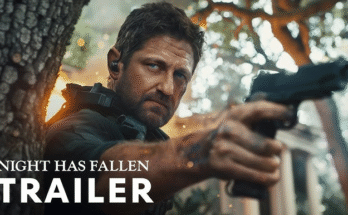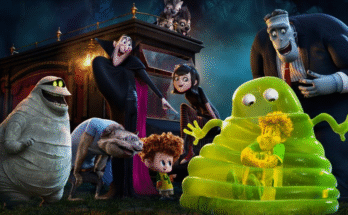Post-apocalyptic cinema often thrives on spectacle, but Extinction (2015), directed by Miguel Ángel Vivas, takes a different path. It carves its story in the silence of a frozen wasteland, where the greatest dangers are not only the creatures lurking in the dark but the bitterness, grief, and fragile bonds between those left behind.

Set years after a viral outbreak has reduced humanity to scattered survivors, the film follows Patrick (Matthew Fox) and Jack (Jeffrey Donovan), two men forced into an uneasy coexistence. Their lives are defined by distance—emotional as much as physical—while they attempt to raise Jack’s young daughter, Lu (Quinn McColgan), in a snowbound ghost town. This trio forms the fragile heart of the story, their quiet routines masking deep fractures of trust and unspoken resentment.
The frozen landscape itself is a character. Vast, silent, and merciless, the snow-covered ruins reflect the isolation and despair consuming the survivors. Unlike the fire-and-brimstone imagery often associated with apocalyptic tales, Extinction builds its horror in ice: slow, suffocating, and relentless. Each breath of cold air feels like a reminder of humanity’s fragility.
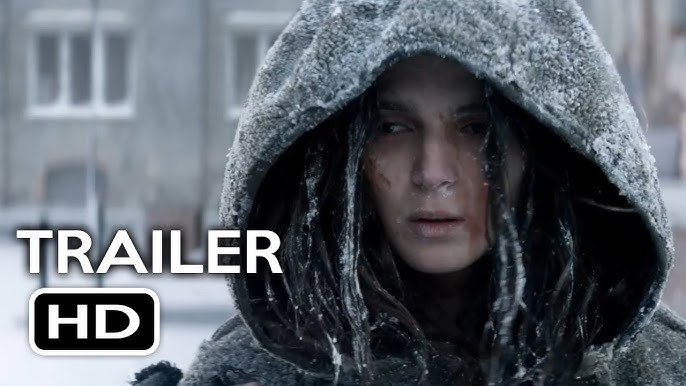
What sets the film apart is its tension between stillness and violence. For long stretches, it unfolds like a somber family drama—conflicted fathers, a child caught between, a fragile semblance of normalcy. But beneath the quiet lies dread, and when the monsters reappear, the contrast is shocking. The infected are no longer the stumbling remnants of the outbreak but evolved predators, faster, sharper, and terrifyingly efficient.
Matthew Fox delivers one of his most haunting performances as Patrick. His portrayal is steeped in guilt, regret, and an unspoken desire for redemption. Opposite him, Jeffrey Donovan’s Jack embodies stubborn pride and fierce protectiveness, his love for his daughter colliding with old wounds that refuse to heal. Their dynamic is volatile yet magnetic, a constant reminder that survival is as much about emotional reconciliation as it is about brute endurance.
Quinn McColgan’s Lu becomes the soul of the film. Innocent yet perceptive, her presence anchors the adults in something beyond anger and regret. Her questions, her laughter, and her resilience breathe warmth into an otherwise frigid world. She represents not just the future but the possibility of healing—a fragile spark against overwhelming darkness.
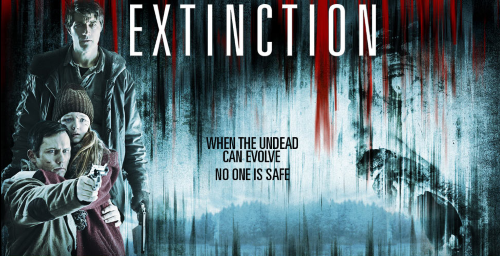
Thematically, Extinction is about more than monsters. It explores the cost of grudges, the weight of forgiveness, and the courage it takes to love when everything else has been stripped away. The horror of the infected is real, but the greater terror lies in watching people fail each other, even when they are all they have left.
Cinematically, the film thrives on atmosphere. Snowstorms blur the horizon, abandoned houses creak with emptiness, and every shadow suggests lurking danger. Vivas crafts a claustrophobic tension even in wide, open spaces—an impressive feat that makes the environment itself feel like an enemy.
When action arrives, it is swift, brutal, and unforgiving. Yet the violence never overshadows the emotional weight. Instead, each encounter with the infected raises the stakes of the relationships at the center. The question is not only who will survive, but what they are willing to sacrifice for each other when the ice begins to crack.
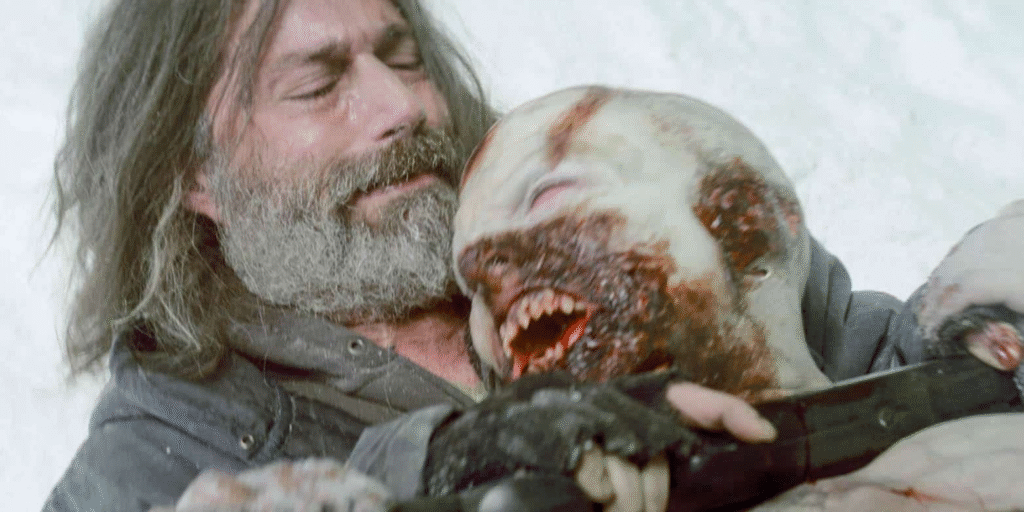
The film builds toward a climax that fuses terror with catharsis. The infected’s return forces Patrick and Jack to confront their shared past, to strip away years of anger, and to rediscover the bond that once tied them together. It is here that Extinction transcends simple survival horror, becoming a meditation on forgiveness, family, and the fragile thread of humanity that keeps people fighting.
In the end, Extinction (2015) is a chilling, overlooked gem—a film that blends the bleakness of post-apocalyptic horror with the quiet ache of human drama. It is as much about redemption as it is about survival, reminding audiences that even in the coldest wastelands, the hardest battles are fought within.

